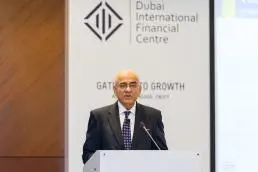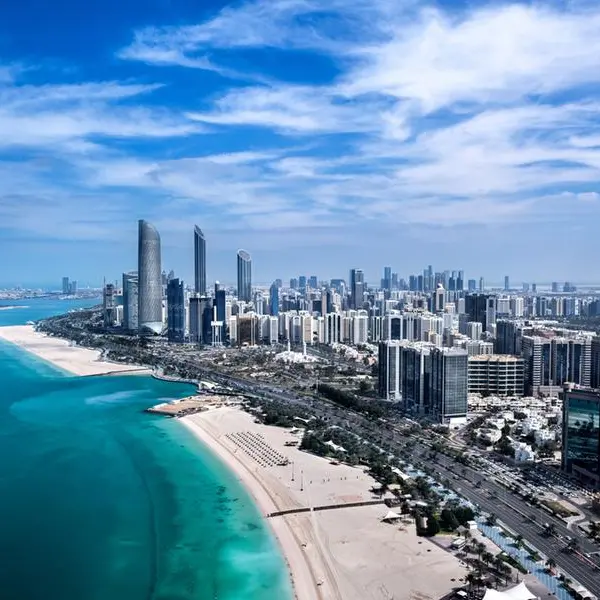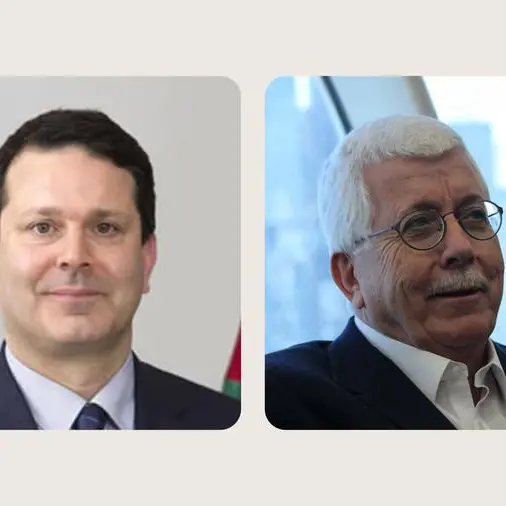PHOTO
Dr. Masood Ahmed, Director of IMF's Middle East and Central Asia Department: The economic activity of oil importers in the MENAP region have started to strengthen
Dubai-UAE: 25 April, 2016
Dubai International Financial Centre (DIFC), a global financial hub connecting businesses and institutions with emerging market opportunities across the Middle East, Africa and South Asia (MEASA), hosted a conference in collaboration with the International Monetary Fund (IMF) to release the IMF's 2016 economic outlook for the Middle East, the Gulf, and North Africa.
Outlining the Fund's 2016 regional economic outlook for the MENAP region, Dr. Masood Ahmed, Director of the IMF's Middle East and Central Asia Department, highlighted the various economic policy issues in the region and presented the forecast for key economic indicators - including fiscal balances, current accounts and GDP.
The IMF issues a detailed bi-annual report (link) on the impact of present-day geopolitical and socio-economic factors on the region's economies.
The 2016 report examined the continued impact of low oil prices and growing conflicts in the region's oil exporting and oil importing countries. It also highlighted the implications of fiscal consolidation measures and reduced budget balances on the employment, financial and business landscape.
Speaking on the occasion, Dr. Masood Ahmed, Director of the IMF's Middle East and Central Asia Department, said: "Low oil prices and deepening conflicts continue to weigh on economic activity in the MENAP region. The growth prospects for most oil exporters have been revised down markedly since October 2015, given the continued rout in the global oil market."
He added: "Unlike oil exporters, the economic activity of oil importers in the MENAP region have started to strengthen - albeit gradually and unevenly. Lower oil prices, less fiscal drag and improved confidence owing to progress with recent reforms are supporting this recovery. Yet security disruptions and social tensions persist, and adverse spillovers from regional conflicts -including economic pressures from hosting refugees - and, more recently, slowdowns in the GCC region have led to a more restrained outlook."
In his welcome address, Arif Amiri, Chief Executive Officer of the DIFC Authority, said that near-term economic challenges should not obscure the upward economic trajectory in the overall region. Speaking on the resilience of the UAE's economic and financial ecosystem, he highlighted DIFC's role as a credible hub for global firms to access cross-border trade and investment opportunities from a reliable, conducive and secure base.
Arif Amiri said: "It is evident that we need to take a closer look at growth projections for the MENAP region as a whole, but the medium-term outlook is positive. Committed to reducing vulnerabilities and improving competitiveness in the region, the GCC countries, in particular, have begun reviewing and modifying their structural and fiscal reforms so as to boost economic prospects and improve living standards. Demonstrating their resilience to global market volatility and headwinds, the region will continue to make significant contributions to the international economic ecosystem."
He added: "With a sophisticated and internationally recognised legal and regulatory framework, DIFC serves as a gateway for global firms seeking to access emerging market opportunities along the South-South economic corridor. By stimulating trade and investment flows in the region, DIFC will further contribute to the development of the nation and the region's financial sector while strengthening economic growth prospect on a global level."
The presentation was followed by a specialised panel discussion that shed light on current economic challenges and the future development for the region. This year's panel included Salmaan Jaffery, Chief Business Development Officer of DIFC Authority, Christian Esters, Senior Director of Standard & Poor's Rating Services, and Razan Nasser, Senior Economist at HSBC Bank Middle East Limited.
Moderated by Lubna Bouza, senior economic presenter at CNBC Arabia, the debate hosted prominent financial experts and senior executive officers and directors from leading financial institutions, including banks, capital markets, and wealth management and reinsurance companies.
DIFC has a long-standing relationship with IMF. Committed to the partnership, the Centre recently welcomed IMF Managing Director, Christine Lagarde, to discuss the importance of the financial services sector as a crucial component in the growth and diversification of the UAE's non-oil economy.
-Ends-
About Dubai International Financial Centre
The Dubai International Financial Centre (DIFC) is the financial hub for the Middle East, Africa and South Asia, providing a world-class platform connecting the region's markets with the economies of Europe, Asia and the Americas. It also facilitates the growth in South-South trade and investment. An onshore, international financial centre, DIFC provides a stable, mature and secure base for financial institutions to develop their wholesale businesses.
The Centre offers all the elements found in the world's most successful financial industry ecosystems, including an independent regulator, an independent judicial system with a common-law framework, a global financial exchange, inspiring architecture, powerful, enabling support services and a vibrant business community. The infrastructure within the district features ultra-modern office space, retail outlets, cafes and restaurants, art galleries, residential apartments, public green areas and hotels.
Located midway between the global financial centres of New York, London in the West and Singapore, Hong Kong in the East, DIFC (GMT +4) fills a vital time-zone gap with a workday that bridges the market and business hours of financial centres in both Asia and North America.
In 2015, DIFC launched its 2024 growth strategy, a blueprint for the next decade of growth of the financial hub. The growth strategy aims to stimulate trade and investment flows along the South-South economic corridor encompassing Africa, Southern Asia and Latin America.
Currently, 1,445 active registered companies operate from the Centre, with a combined workforce of 19,808 professionals.
DIFC continues to pursue expansion into new services and sectors within the Middle East, Africa and South Asia region, an area comprising over 72 countries with an approximate population of 3.0 billion and nominal GDP of US$7.8 trillion.
For further information, please visit our website: www.difc.ae, or follow us on Twitter @DIFC.
For media enquiries, please contact:
Hajar Al Ketbi
Dubai International Financial Centre
Vice President - Corporate Communications & Public Relations
Tel: +971 4 362 2440
Email: Hajar.AlKetbi@difc.ae
Sonali Rekhi
APCO Worldwide
Associate Director
Mobile: +971 55 6264986
Email: srekhi@apcoworldwide.com
© Press Release 2016











